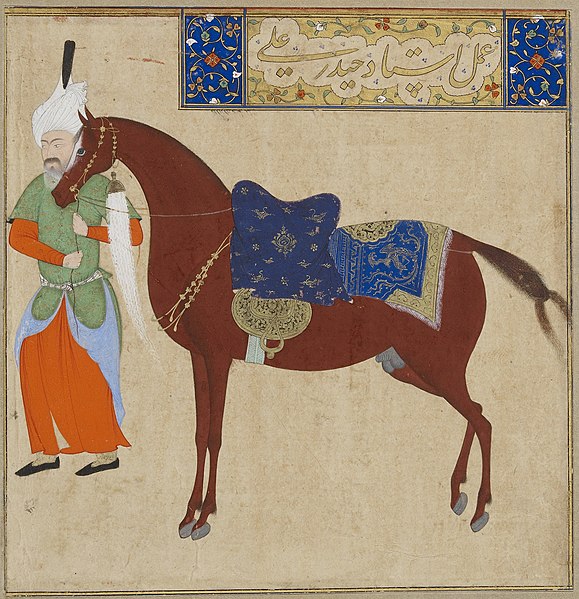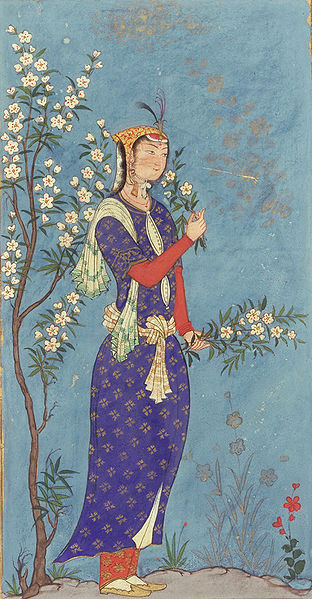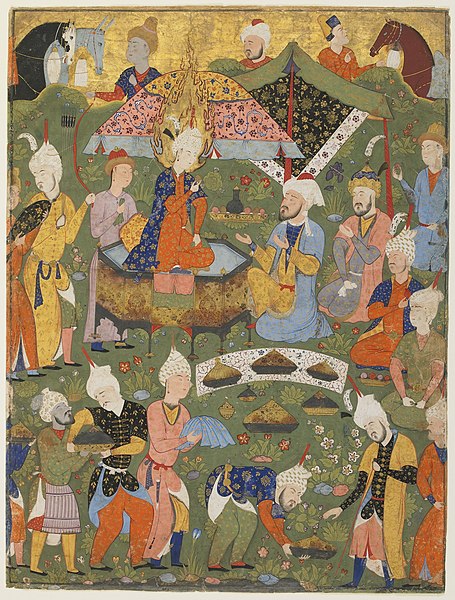Mohammad Khodabanda, was the fourth Safavid shah of Iran from 1578 until his overthrow in 1587 by his son Abbas I. Khodabanda had succeeded his brother, Ismail II. Khodabanda was the son of Shah Tahmasp I by a Turcoman mother, Sultanum Begum Mawsillu, and grandson of Ismail I, founder of the Safavid dynasty.
Mohammad Khodabanda (detail) by Ahmad Monshi Ghomi
Coin minted during the reign of Mohammad Khodabandeh
Mohammad Khodabandeh signature
The Safavid dynasty was one of Iran's most significant ruling dynasties reigning from 1501 to 1736. Their rule is often considered the beginning of modern Iranian history, as well as one of the gunpowder empires. The Safavid Shāh Ismā'īl I established the Twelver denomination of Shīʿa Islam as the official religion of the Persian Empire, marking one of the most important turning points in the history of Islam. The Safavid dynasty had its origin in the Safavid order of Sufism, which was established in the city of Ardabil in the Iranian Azerbaijan region. It was an Iranian dynasty of Kurdish origin, but during their rule they intermarried with Turkoman, Georgian, Circassian, and Pontic Greek dignitaries, nevertheless, for practical purposes, they were Turkish-speaking and Turkified. From their base in Ardabil, the Safavids established control over parts of Greater Iran and reasserted the Iranian identity of the region, thus becoming the first native dynasty since the Sasanian Empire to establish a national state officially known as Iran.

Image: Safavid Dynasty, Horse and Groom, by Haydar Ali, early 16th century
Image: Safavid Dynasty, Woman with a Spray of Flowers, circa 1575 AD
Image: Safavid Dynasty, Joseph Enthroned from a Falnama (Book of Omens), circa 1550 AD
Image: Shirin bathing, being approached by Khusraw, Safavid miniature painting, Iran







